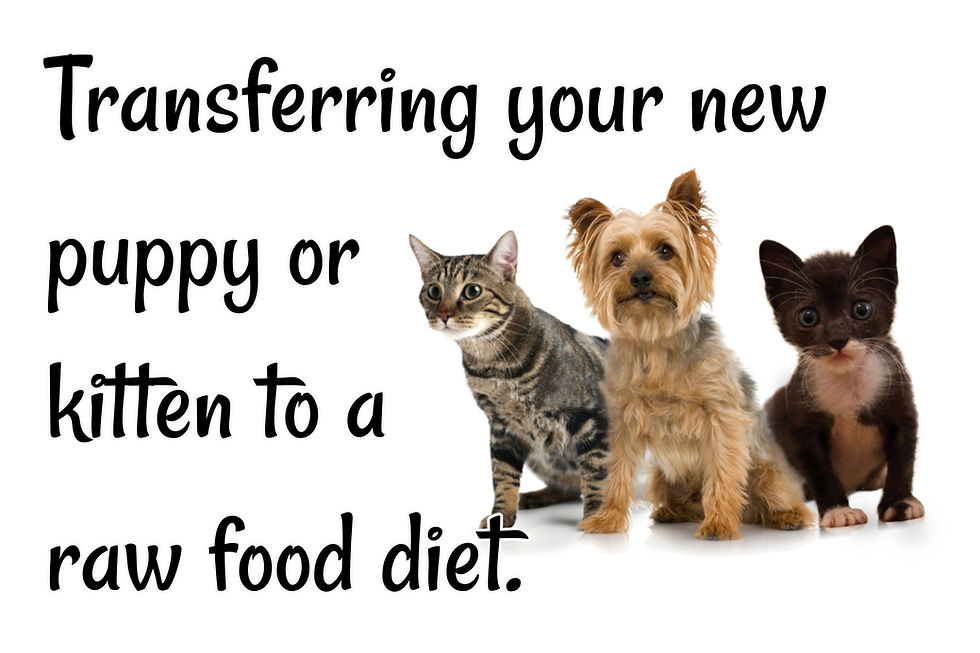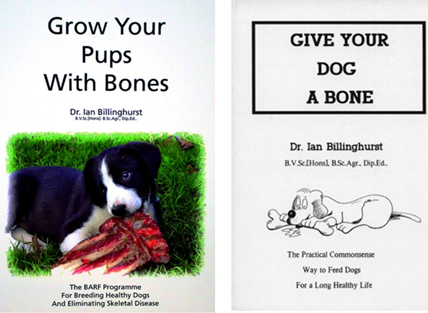
It can be challenging to determine the amount of food a new puppy or kitten requires given the range of factors and rate of development which impact the calorie needs of the youngster. A good guide is to begin with a daily amount of 10% the puppy or kittens’ weight. This daily amount should be fed to the youngster throughout the day as 3 or 4 small meals rather than one large meal, this is to aid digestion and avoids the pet becoming hypoglycemic due to long time spans without food.
It’s important that the pet receives the appropriate amount of food for their needs as overfeeding can lead to obesity, excessive growth rates and skeletal issues whilst underfeeding can lead to reduced energy levels and poor growth. Its import therefore to monitor the youngsters’ appetite, growth and development and to adjust the amount being fed as needed to ensure the pet stays lean whilst continuing to grow and play. Ideally the youngsters’ ribs should be easily felt although not seen with a lean covering over them, from the side the abdomen will be nicely tucked, and they will have a nicely defined waist when viewed from above.
Assuming the puppy or kitten is suitably weaned, not unexpectedly orphaned, soft raw meaty bones such as chicken necks or wings are the ideal first food as they learn about their new home and surrounds. For those that have not encountered raw food before and are a little hesitant the chicken necks can be chopped or minced depending on what’s needed, adding a little bone broth can further enhance palatability for the timid youngster starting on a raw food diet.
The meaty bones will form 80% of a kitten’s diet, for puppies it can be 60%. Once they are accustomed to eating the meaty bones, offal can be introduced; ideally this should form 10% of the diet for both puppies and kittens. To minimise the risk of any gastrointestinal upsets the pet should be introduced to one protein source at a time, if there are no issues over the course of say 14 days, a second protein source can be introduced, and so on expanding the diet as appropriate with a variety of bird, game and fish.
For those youngsters that have an exceptional appetite it’s useful to add large meaty bones to their diet, adding recreational bones aids in the youngsters development without the rich energy component of the smaller meaty bones, adjusting the ratio of soft meaty bones and large recreational bones is a great way to adjust the calorie intake to suit the individual pets needs whilst ensuring they receive all of the essential nutrients they need to thrive.
Increasing the ratio of muscle meat, i.e., very meaty bones, will provide valuable calories to the pup or kitten with a low appetite, whereas increasing the amount of bone, i.e., recreational bones, will entertain the insatiable puppy or kitten and burn energy as they chew tug and play.
A diet based on raw meaty bones and offal should provide all of the nutrients the pup or kitten needs, ideally there would be no artificial supplements added as these should not be needed. Treats, particularly human treats, should never exceed 10% of the diet, but again these really aren’t ideal and definitely not needed. If the owner would like to treat the pups a little egg (whole), cottage cheese or natural Greek yoghurt are all great, easily digestible proteins safe for pups and kitten in moderation as part of a balanced raw diet.

If you’re looking for an easy, well-informed read on nutrition, one author worth checking out is Dr Ian Billinghurst. The following article is based on his texts “Give Your Dog a Bone” and “Grow your pups with bones.”
Sources
Billinghurst, I., 1993. Give Your Dog a Bone. Bathurst, New South Wales: Warrigal Publishing.
Billinghurst, I., 1998. Grow your pups with bones. Bathurst, New South Wales: Warrigal Publishing.

留言